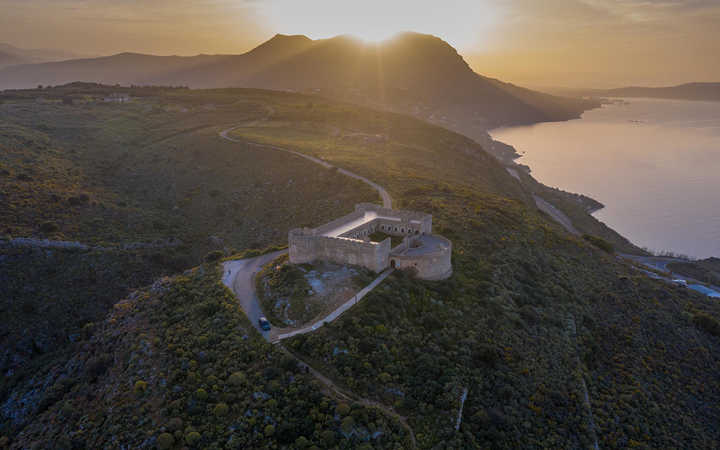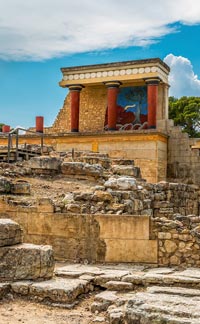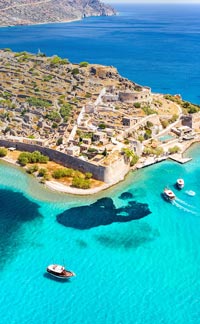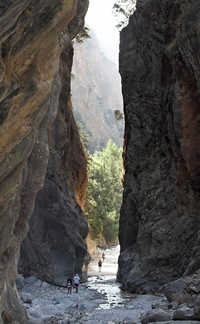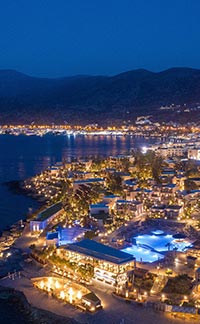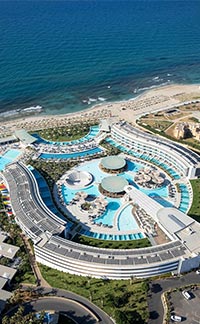Built on the crest of a hill 200 meters above Souda Bay in northern Crete, Aptera was an important city from its founding, and continued to be important up till the Romans came along, although by then it was in the midst of a slow decline. It was continuously inhabited, including having to rebuild after an earthquake in the 7th century AD, until 823 AD, when Arabs destroyed it.
Mythology says that there was a musical contest here between the Sirens, the creatures who lured sailors to their deaths on the rocks with their enchanting voices, and the Muses, the goddesses inspiration in the arts and sciences. The Muses won, and the Sirens lost the feathers they had on their shoulders, thus becoming "aptera," or "featherless." They then cast themselves into the sea, becoming the pair of islets in Souda Bay named "Leucae," or "White," which now are called Souda and Leon.
Another, more likely story is that its name came from Apteron, its founding king, who was a Dorian from mainland Greece and had settled there near the end of the Minoan era, around 900 BC. A connected story states that it is named after a Cretan king of the same name who lived during the time of Moses (1500 BC).
With the White Mountains serving as a backdrop to the south, and the waters of Souda Bay 700 meters to the north, Aptera controlled the east-west traffic on the plain of Armeni between it and the bay, and, by extension, a large section of western Crete. Its peak population was about 20,000, with a freeman to slave ratio of about 1-to-5. Aptera gained fame from its well-trained archers, who served as an army's artillery. Many of them hired out as mercenaries and were well-compensated, and then brought their wealth home, contributing to the development of Aptera.
Items unearthed at Aptera include coins, tablets engraved with the Linear B script, drinking vessels, and some artwork dating from Classical, Hellenistic, and Roman periods. There are temple ruins in the immediate area, including one to Eileithina, the goddess of birth, and a Dorian-era temple, which is near an ancient theatre. In 1958 a temple dedicated to Demeter was unearthed, along with some 4th century BC tombs which contained (in addition to their skeletons) silver brooches, various vessels, and coins. There is an arched, Roman-era sanctuary.
About 4 km of Hellenistic-era defensive walls still survive. There are a number of Roman-era cisterns still in fairly good repair. Just inside the entrance is the small 12th century monastery of St. John the Theologian, built over the ruins of a still-earlier Church. The monastery ceased operating in 1964. Within the walls of the monastery are a chapel, and a two-story stone building which contained the cells of the monks.
There is a well-preserved fortress with a round, corner watchtower which was built and used by the Ottoman Turks, and served as a key link in the chain of fortifications used to control the island.
Ancient Aptera is one of the most important archeological sites on Crete.

